Editor from Unbanned: The Legend of AJ1
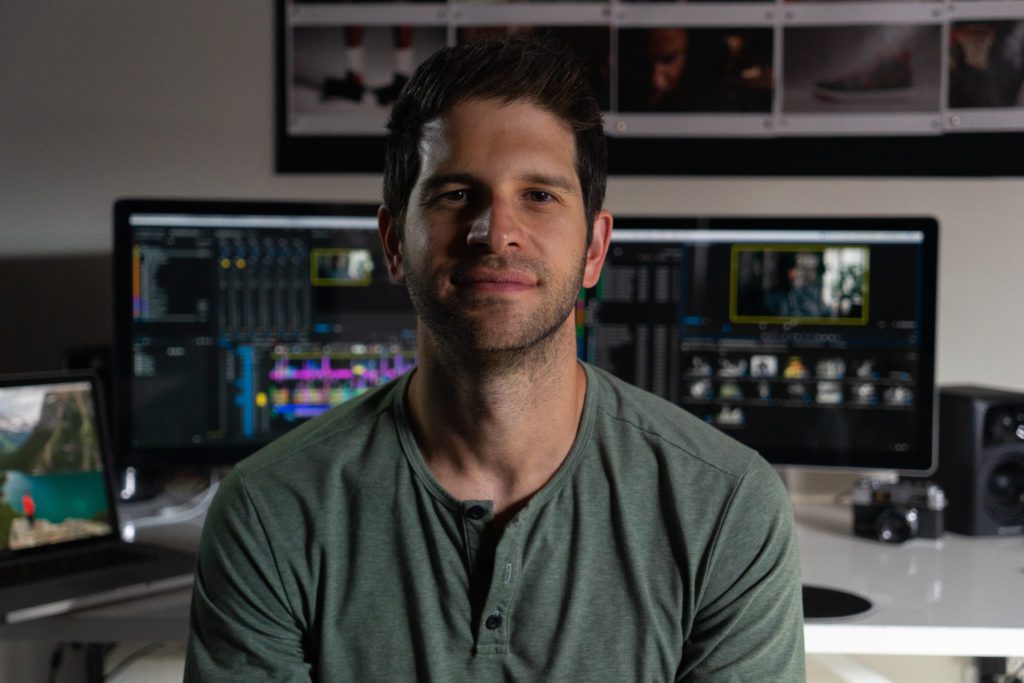
2011 Alumnus Alex Trudeau Viriato
Alex Trudeau Viriato worked in branded content for Nike, The North Face, Blue Origin and Verizon before editing Hulu’s “Unbanned” documentary.
Narrowing the Focus
I graduated from San Francisco State University in 2008 with a degree in Marketing. I tested the waters of the business industry very briefly before I came to the realization that I had a short window to pursue my dreams of working in film. I didn’t have time for another 4-year program so I searched for accelerated programs. That’s when I found The Los Angeles Film School. At the time they offered a 1-year program that covered all the aspects of filmmaking, there were no concentrations in a particular discipline.
The program was quick, going through film history, directing, editing, producing, production design, and cinematography courses. Early on I knew I wanted to learn it all so I would have a better understanding of what the rest of the crew was doing. The first class I had on editing was taught by Dan Earley and Justin Wingate. This would be where I’d learn some of the more specifics techniques in editing and programs of that time – Final Cut 7 and Avid Media Composer 8.
When it came time to make our thesis projects, I assumed I would edit a student film. Luckily, I saw an opportunity to direct my own with my current resources in the cycling community. So we set out to make what would become the documentary – Fixation. I edited most of the film at The Los Angeles Film School and then went on to strike a deal with Netflix in 2012 where it streamed for two years.
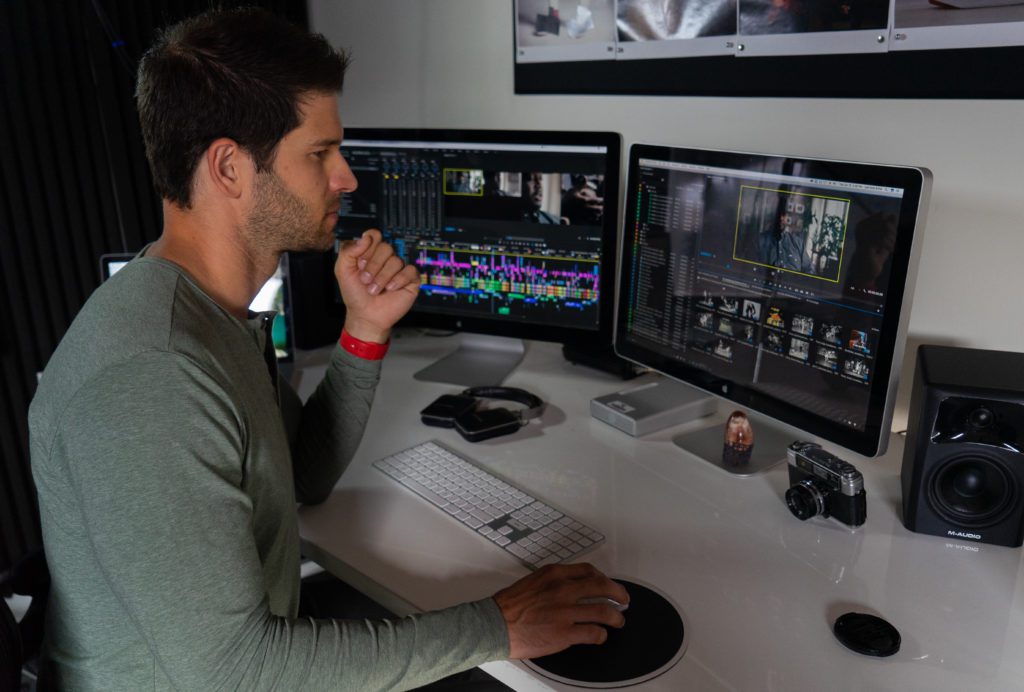
Alex working on Unbanned
“After graduation, I tried to edit everything I could get my hands on. 2010-2012 seemed like a peak period for people attempting all genres of web series.”
Career Beginnings
If the opportunity arose, I’d edit it – web series, sizzles, reality, whatever. Sometimes working for free, other times it was just enough to make rent. (My goal is to never think I’m better than the work. If I took on a project that I didn’t love, it was still my job to edit to the best of my ability. I might have thought I should be cutting full-length features at that point, but that wasn’t my reality).
As I started to meet more people creating content, I would get more offers. Sometimes as an assistant editor and other times as an entry-level editor. Assisting was not something I found creatively satisfying. I was still in the edit bay, but I wasn’t contributing in the way I had envisioned. So I decided I’d try to leap over assistant editing as quickly as possible. I even took Post PA jobs on Don Jon and Ride Along, simply to learn and observe the dynamic of editor and director on studio features.
About a year later there was a crucial moment when I could have become a union assistant editor or the lead editor for branded content at Los York. I knew I wanted to make narrative films/tv shows, but only one of those paths would keep me editing full time.
I became the lead editor at Los York and for 2 years cut social spots for Nike, Jordan Brand, Fitbit, Annie’s, and a variety of companies. Learning to tell a story in 60 or 30 seconds created new challenges for me as an editor. All along hoping that I’d get an opportunity to cut a longer form project or that one of these directors would move into docs or features.
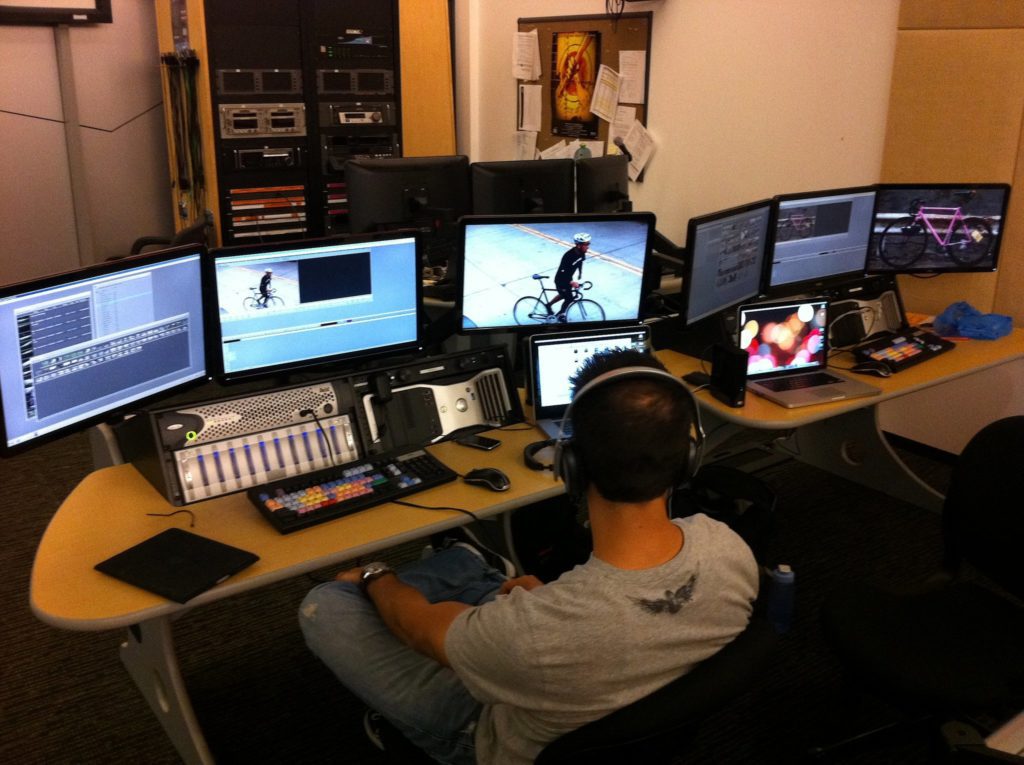
“Before the program started, I had an interest in editing and directing. In high school, I would edit trailers from VHS copies of my favorite movies.”
How Alex transitioned from branded content to feature-length film
There were two owners of Los York, Seth Epstein and Dex Deboree. Dex pitched the idea of Unbanned to me in 2015. I had worked with Dex and knew the Jordan brand well from doing multiple spots for them, even a Super Bowl commercial in Canada. The only feature doc experience I had at this point was my thesis, but I had no doubt that I could edit this project. I cut an 8-minute documentary short for Dex and that solidified that we were going to move forward on the feature version.
Initially, I was tasked with taking the first 5-7 interviews and exploring what we had. I used Adobe Premiere and started peeling apart the interviews and elements of the stories that could be further developed. I was working with a dedicated assistant editor Charles Farrell and together we spent days researching videos and articles about the ’80s, sneaker culture, hip hop, Michael Jordan, The Bulls, and Nike. We ripped countless videos off the internet – music videos, commercials, old basketball games and other videos from that era. We wanted to learn it all. How deep could this story go? At one point we had probably 10-15 interviews and a 90-minute assembly cut, but it wasn’t right, it didn’t go deep enough, it was lacking in story. So we stopped down while Dex conducted more interviews with people of different talents and backgrounds. These new interviews would help fill other elements of the story arch.
When we came back, we looked at everything from a fresh perspective. The old 90-minute cut was never touched again. I started cutting where we felt the story was the strongest. I found a cadence that we liked and explored style options. What would make this doc different than the rest? That launched an entirely new film. This was going to be quick, stylized, dramatic, and touch on topics far outreaching just sports and sneakers. This is the moment we knew we had something special. I had no desire in telling a story purely about sneakers. It needed layers and a human element not explored in previous docs about similar topics. By the time we were done, we had 57 interviews and 21,000 assets in the Premiere project.
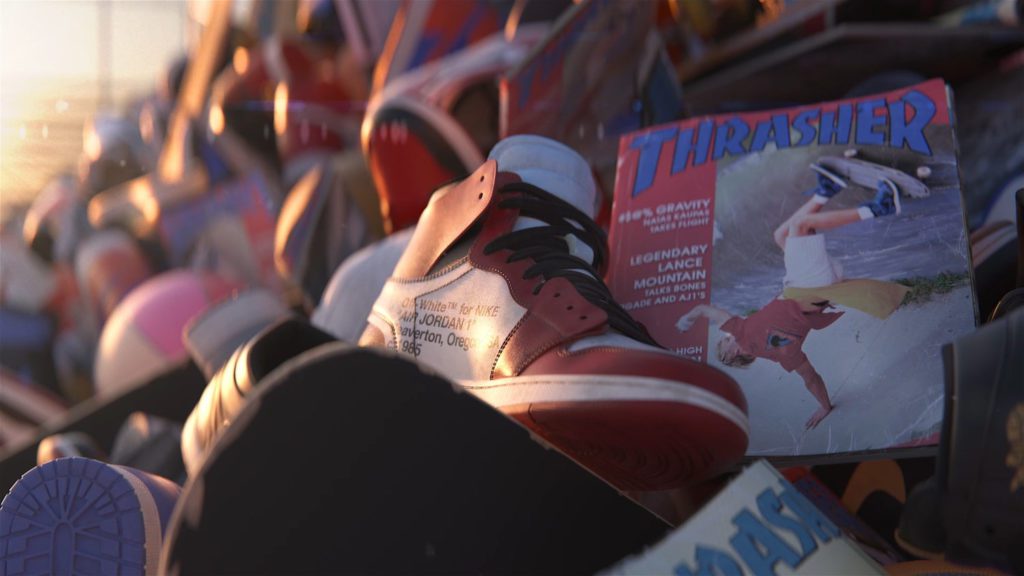
Photo via Los York
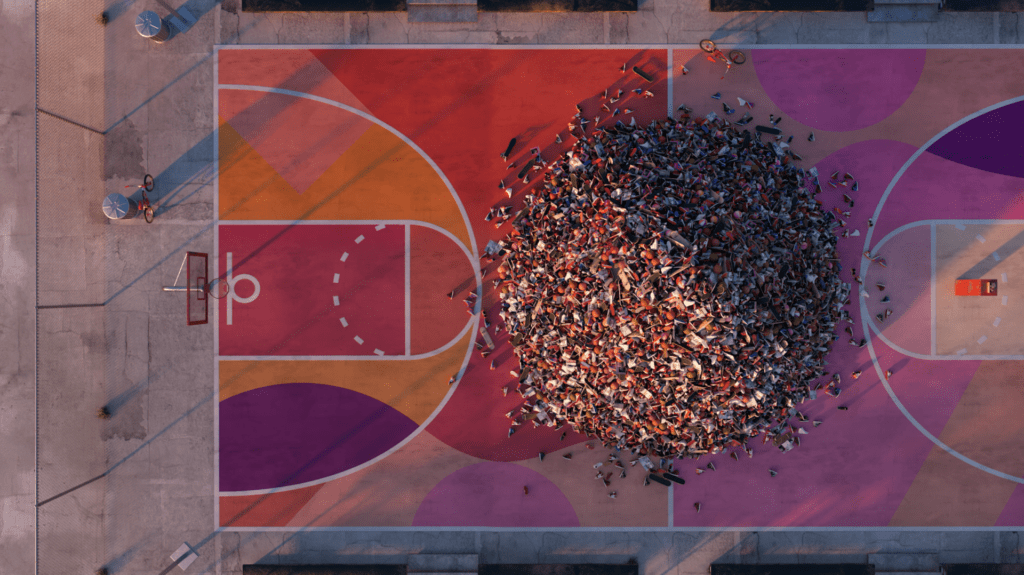
Photo via Los York
New Respect for Sneaker Culture
My perspective on sneakers changed completely when I started working on branded content for Nike and Jordan. I began to explore not only the culture but also the artists that design the shoes. That was the biggest turning point. Seeing these designers such as Peter Moore and Tinker Hatfield look at shoes as art: the curves, materials, shape and what they represented in that time. I found it fascinating. Now I’m particular with my sneakers, but I still wear them. I don’t have any stashed in my closet that aren’t used and worn. At the end of the day, it’s still a physical item. You can put as much or as little emphasis on it, depending on your own story. That’s what Unbanned was all about: how did the shoe affect people, how do they remember it and what did it symbolize to them.
Where can people follow you on social?
Instgram: @ATViriato
Linkedin: Alex Trudeau Viriato
Website: www.ATViriato.com
Watch Unbanned: The Legend of AJ1 on Hulu
